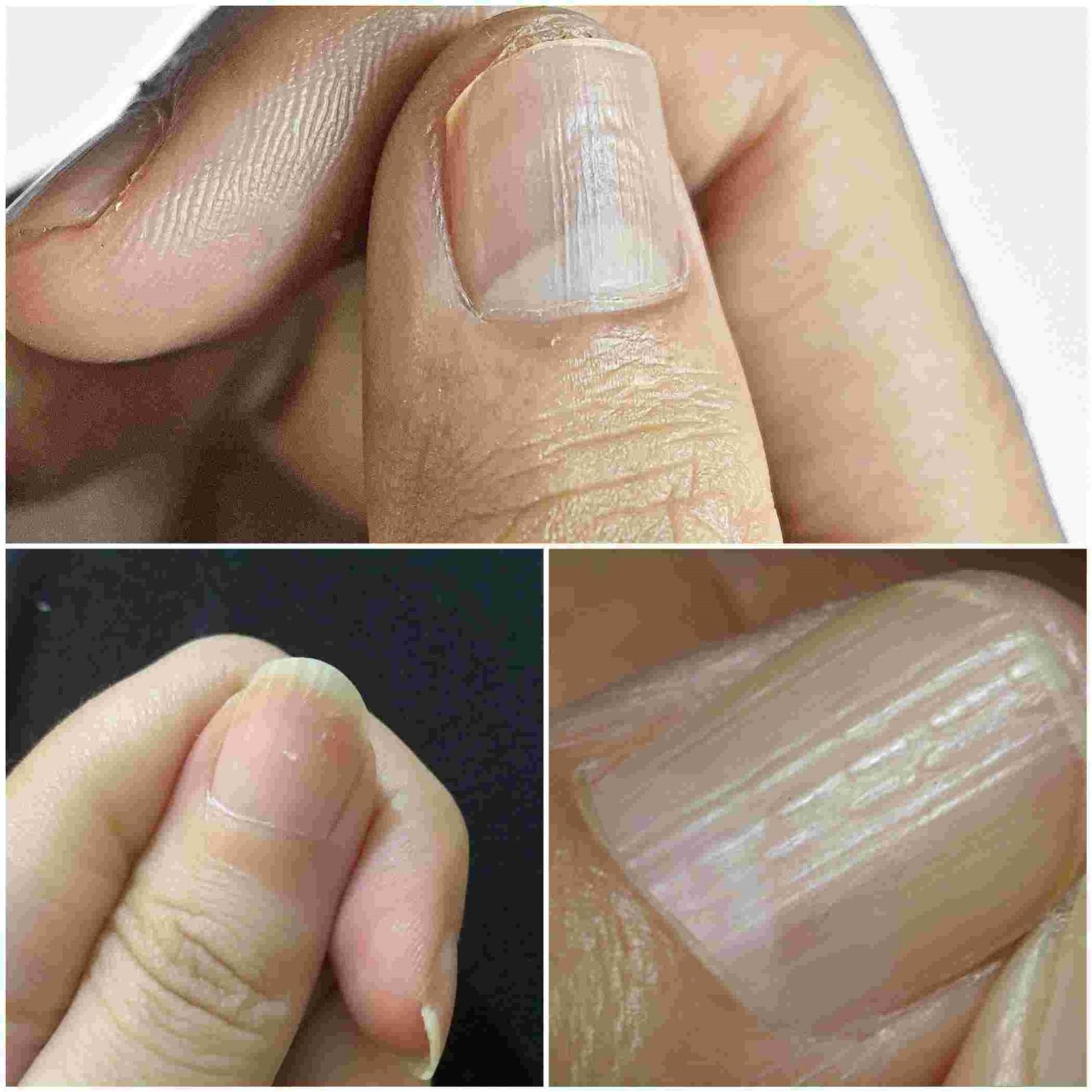ADVERTISEMENT
Common causes of nail trauma include:
– **Accidental bumps or hits to the nail**: A hard blow to the nail can cause changes to its growth pattern, leading to ridges.
– **Nail biting**: Constantly biting your nails can damage the nail bed, causing abnormal nail growth and ridges.
– **Repeated pressure**: For individuals who work with their hands frequently or engage in activities that put pressure on the nails, such as manual labor or sports, vertical ridges can appear.
While the ridges from trauma usually resolve over time as the nail grows out, persistent trauma may lead to permanent changes in the nail’s appearance.
#### **5. Hormonal Changes**
Hormonal fluctuations can have a profound impact on various aspects of your health, including your nails. Conditions like pregnancy, menopause, or thyroid disorders can lead to changes in nail appearance, including the development of vertical ridges.
– **Pregnancy**: During pregnancy, hormonal shifts can impact the growth rate of nails. Some women may notice that their nails grow faster, while others might experience slow growth and the appearance of vertical ridges.
– **Menopause**: The hormonal changes associated with menopause can lead to a decrease in collagen production, affecting nail health and causing ridges.
– **Thyroid problems**: An underactive thyroid (hypothyroidism) can lead to slow nail growth and the formation of ridges. In some cases, nails may also become more brittle and prone to breakage.
If you suspect that hormonal changes are contributing to your nail issues, it may be worthwhile to discuss it with your healthcare provider for appropriate testing and treatment.
#### **6. Underlying Medical Conditions**
In some cases, vertical ridges on nails can be a sign of a more serious underlying health condition. If you notice other unusual symptoms or if the ridges are accompanied by changes in your nails, it’s important to seek medical advice.
– **Psoriasis**: Psoriasis is a skin condition that can affect the nails, causing pits, ridges, and discoloration. In some cases, it can lead to vertical ridges.
– **Eczema**: Eczema is another skin condition that may cause changes in the nails, including vertical ridges, particularly when the skin around the nails is affected.
– **Circulatory issues**: Conditions that affect blood circulation, such as peripheral artery disease (PAD), can cause changes in nail health, including the development of ridges.
– **Autoimmune diseases**: Conditions like rheumatoid arthritis or lupus can also cause nail abnormalities, including ridges, discoloration, and deformities.
If you notice that your vertical ridges are accompanied by other symptoms, such as fatigue, pain, or changes in skin color, it’s important to consult with a healthcare professional for a thorough evaluation.
—
### **How to Care for Nails with Vertical Ridges**
While vertical ridges are often harmless, there are several steps you can take to keep your nails healthy and prevent further damage. Here are a few tips for maintaining strong, smooth nails:
1. **Hydrate regularly**: Drink plenty of water and apply moisturizing lotions or oils to your nails and cuticles to keep them hydrated.
2. **Nutritional support**: Ensure that you’re getting adequate vitamins and minerals, particularly iron, zinc, and vitamin B12. A balanced diet or supplements can improve nail health.
3. **Avoid trauma**: Be gentle with your nails and avoid nail-biting, which can cause damage. If you engage in activities that put pressure on your nails, consider wearing protective gloves.
4. **Gentle nail care**: Trim and file your nails regularly using a gentle nail file. Avoid harsh chemicals and opt for gentle nail polish removers to prevent weakening.
5. **Consult a doctor**: If you notice a sudden change in your nails or if the vertical ridges are accompanied by other health concerns, seek medical advice for a proper diagnosis and treatment plan.
—
### **Conclusion**
Vertical ridges on nails are a common occurrence that can be caused by a variety of factors, including natural aging, nutritional deficiencies, dehydration, trauma, and hormonal changes. While these ridges are usually harmless, they can sometimes be indicative of underlying health issues. If you notice persistent changes in your nails, it’s important to consult with a healthcare provider to rule out any potential medical conditions.
In most cases, vertical ridges are a normal part of the aging process and can be managed with proper nail care, hydration, and a balanced diet. By taking the necessary steps to care for your nails, you can maintain their health and appearance, ensuring that they remain strong and beautiful for years to come.
